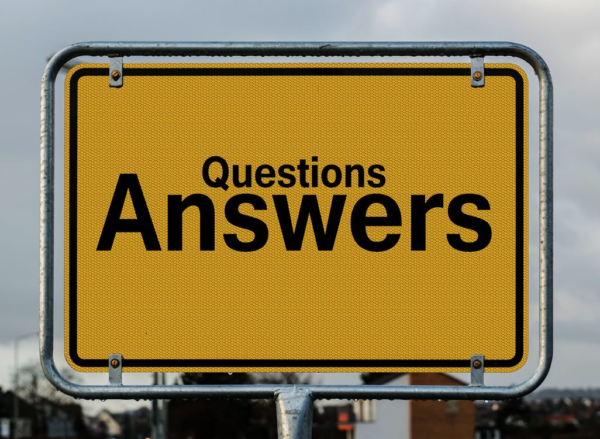FAQs
What do your turnaround times look like?
Timetables for each company and project will vary and our objective is to meet your goals. If your primary objective is speed – there are many options you have to achieve your level of speed. We would be happy to supply you with a complimentary consultation to understand your needs and provide you with the right timing estimates based on your specific situation. A dedicated Language Quality Assurance (LQA) team ensures linguistic integrity through the three-step CQ TEP process, namely, Translation, Editing, and Proofreading. We take editing and proofreading seriously, not taking shortcuts in quality control. Complying with these three steps can help us guarantee quality. Other factors that would influence TAT (turnaround time) includes if additional reviewers on your end are required or if any DTP (desktop publishing)/ audio / visual is needed for the files. We collaborate very closely with our clients to establish standard timelines, we are agile, scalable, and able to adjust based on needs. We have established linguistic teams that are available 24/7/365 in any of the main working languages and we guarantee linguist resource availability in our network during busy times. More specifically, we have service level agreements (SLA) in place with all resources who are dedicated to an account and departments to ensure that we have the capacity necessary throughout the year regardless of peak times, weekends and holidays.
CQ fluency understands the vital importance of meeting deadlines, especially regulated deadlines. We have structured our business and our production workflows to deliver documents as quickly as possible. Our specialty in life sciences and healthcare means we are very familiar with industry documents and terminology and do not waste time determining the
resources you need to meet your deadlines.
What should I prepare to set up our partnership for success?
- goals
- volumes, deadlines and services
- file types
- subject matter
- languages needed regularly
- translations assets and/or previously translated projects
- prior challenges
What languages do you translate into?
CQ fluency has a dedicated team of project managers and linguists that can help you resonate with anyone, in almost any language. We currently supply services in 170+ languages. That list can be found here. If there is a language you need that is not listed, we would be happy to investigate that for you.
How do you charge for your services?
CQ fluency is proud to partner with our clients to deliver some of the most competitive rates in the translation industry. We are committed to not simply getting you the best price, but also high quality work. Rates will be influenced by number of words, complexity of project, timing expectations, type of translation certification required and of course the language pair. Certain language pairs are very common with many linguists available. The nature of supply/demand means those translation projects would be less expensive than a less common language pair. Additionally, requiring a translator with a medical degree or other specialty would also affect price.
What can we do to reduce costs?
Translation productivity is never a “one size fits all” approach. Optimizing human involvement in tech-enabled processes is where we add the most value. We are eager to share our success stories with the world’s largest healthcare organizations to reduce translation costs by up to 60%. Examples include:
- Centralize your global translation projects through a Managed Services Provider (MSP) Model.
- Evaluate your technology and processes; we are experts in continuously optimizing the best platforms on the market and harmonizing them to work well together for a truly customized tech stack to meet your needs.
- Track and evaluate global spend for projects performed by third-parties such as CROs, marketing agencies, etc.
- Reduce the number of global, regional and local qualified vendors and renegotiate rates
- Establish global guidelines for “Translatability” of source content in English
- Outsource the management of your Client Review Cycle (your SME validation)
- Eliminate minimum fees incurred by batching small projects
- Define purpose of translated content (internal vs. external) “gisting” vs. full process
- Define regulatory content requirements per region/country to avoid translation where source English is acceptable
Do you offer other services beyond translations?
CQ fluency offers services that help you connect with diverse audiences. Naturally, that requires a full suite of language services. Examples of our work include multicultural consultancy, project management, desktop publishing, cultural adaptation, transcreation, interpretation, translation asset management, transcription, web / mobile / multimedia, training /
e-Learning localization, linguistic validation, accessibility, Section 508 / WCAG compliance, managed service provider and much more.
What file formats can your linguists work with?
We can work with almost any file format. Some formats will be less expensive to work with.
What is the difference between Translation Memory (TM) and Machine Translation (MT)?
Translation Memory (TM) leverages previously translated materials by breaking them up into manageable “segments” in different languages . Computer Aided Translation (CAT) software makes the translation process faster and more cost-effective, as our linguists don’t need to spend time on phrases/words that have been translated before. You also maintain
consistency, accuracy, and quality control. All reference materials are stored in the tool such as; glossary, non-translatable lists, segmentation rules, and style guides. CQ fluency maintains the TM on a regular basis by continuously removing old, inconsistent and incorrect translations from the TM. Our human translators oversee the original content and the highlighted matches/repetitions, and assess the translation for modification. Upon completion of any translation project, the TM is updated accordingly. You have server-based, real-time access to an exportable, universal file format (TMX).
Machine translation (MT) is the process of using artificial intelligence (AI) to automatically translate content from one language (the source) to another (target) without human input (using a computer application called an MT engine). Neural MT uses machine learning to teach the system how to produce the best results. this is becoming the standard MT engine but requires more CPU processing power. MT is often used for gisting – quick understanding of a document’s meaning. Otherwise post editing by a professional linguist will often be required. This can include light PE – post editing that is focused on key critical issues and not a full review or heavy PE – post editing that is focused on improving the MT content for readability and to train an MT engine.
Do you have Language Pre-Flight Processing to establish a glossary for preferred terminology?
Yes, it is a required step when onboarding a new client/department, working on a new language combination, or working with any new content. The preflight process includes following our ISO 17100 guidelines and workflows and:
- Ensuring we have all the necessary assets to perform the service requested
- Performing a cultural checklist analysis
- Confirming proper glossary and non-translatable list are being used
- Using ISO process to align the correct linguistic team to the type of content needing translation, formatting, and QA
What are the minimum qualifications of your linguists?
Our rigorous recruitment process is designed to identify linguists with in-depth expertise in their language pair(s) and who are experts in their specialized field. All our linguists are native speakers of their target language, with at least an undergraduate degree from a university and 5+ years of experience in specific subject matter. All linguists we hire must adhere to a strict code of ethics, emphasizing impartiality and confidentiality by signing our stringent work/confidentiality agreement. To meet our internal qualification standards, each linguist is tested according to their background and then reviewed by our team of proven, time-tested translators, several of whom are graders for the American Translators Association accreditation program. Professional references are checked to verify their history of quality, punctuality, and availability. The qualities we measure are; Communication & Writing Skills, Mastery of Source and Target Languages, Extensive Vocabulary, Subject Matter Expertise and Consistency. We are a member of the American Translators Association (No 228954) and adhere to its Code of Ethics and Professional Practices. We are also ISO certified, therefore, our translation work is performed in compliance with ISO 9001 and ISO 17100.
Do you have a portal for translation requests?
Our clients have the benefit of utilizing CQ fluency’s dedicated CQportal, free of charge. The CQportal provides access to built-in workflow management, secure file transfers and robust reporting capabilities. There is also the option of submitting files for translation by email. Either way, the files will be received by your dedicated project management team. Thousands of CQ fluency clients enjoy our user-friendly CQportal on a daily basis.


